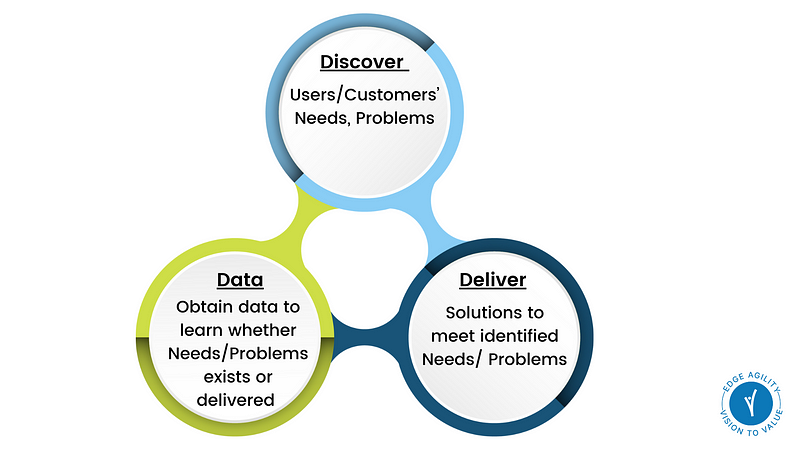
Product Backlog Refinement
In Scrum, Product Backlog Refinement is an activity of breaking big Product Backlog Items into smaller ones and also understanding more details about Product Backlog Items (PBI)such as acceptance criteria, value, size, dependencies, etc.
But why do we break PBIs into smaller ones?
This question is often asked during my training, coaching and consulting assignments. This article covers my thoughts on key benefits that teams get with smaller PBIs.
Key Benefits Of Smaller Product Backlog Items
Though there may be numerous benefits of smaller PBIs I have selected 5 Key ones

- Shorter Feedback Loop
One of the key benefits of Agile ways of working is to reduce the feedback loop by reaching the users and customers. The feedback loop is about learning whether the value that we assumed has been delivered or not.
For that, we need to
- Discover the value by understanding our business goals and how these can be met by serving users/customers
- Deliver solutions to meet the needs and problems of customers/users
- Obtain data on whether the value assumptions we had have been true or not by learnings from what we deliver to customers/users

The shorter feedback loop is better for your product development.
2. Enhanced Learning
Feedback loops are all about learning. Shorter feedback loops created by smaller Product Backlog Items enable better learning.
Learning about
- Who are the real users/customers?
- Whether needs/problems exist?
- Do users/customers value these needs/problems?
- Do we receive some business benefits when these needs/problems are solved?
Product Management Is All About Learning
3. Improved Flow
If you are familiar with the concept of Kanban then you know how important flow of value is.
When PBIs are smaller they move through the workflow stages faster. This reduces the cycle time and increases the throughput, something that many organisations are trying to achieve.
With the smaller PBIs, it is easier to identify what impedes the flow:
- Are we waiting for decisions taken by others?
- Do we have skills/technical gaps in our team? Generally, these gaps are filled with help from outside the team and create more wait.
- Are we collaborating well enough or operating in silos?
This identification of what impedes the flow of value creates opportunities for improvement.
Better flow means we reach the ‘Done’ and create opportunities for validating value assumptions.
The only way to deliver value is by Release. Before that, it is just an assumption.
4. Better Prioritisation
Everything looks important when they are big and this causes one of the biggest headaches in product development: Prioritisation.

When we start breaking the product backlog items into smaller we also start getting more clarity.
Clarity about
- Different users roles
- Business Rules
- Workflow steps
- Scenarios/Use Cases
- Operations
Not all user roles need to be satisfied at the same time. We can identify a few user roles to start with.
Not all business rules need to be met at the same time, a few could be deferred.
Not all workflow steps need to be delivered at the same time. For example, We can focus on onboarding first and think about payments later.
Not all scenarios need to be built in one go. They can be spread across the product development.
5. Opportunities For Experimentation
I have worked in many organisations where leadership don’t like running experiments. When I have explored it further it is not that they don’t want to, it is just the risk of failure and cost associated with it.
- Risk of exploring a new user/customer base
- Risk of not understanding customer problems
- Risk of building not knowing what customers/users may or may not like
- Risk of trying a new technology/solution to meet the same outcome
When our Product Backlog Items are big these risks are big and hence the cost associated with the potential failures.
When we break big product backlog items into smaller ones, we are also breaking big risks into smaller ones.
Most leadership and management are comfortable with smaller risks and hence smaller product backlog items can enable the culture of experimentation and learning.
Conclusion
Smaller product backlog items have immense benefits in product development. Below are the top five:
- Shorter Feedback Loop
- Enhanced Learning
- Improved Flow
- Better Prioritisation
- Opportunities for Experimentation
Why not share your experience in the comments and also what other benefits to have observed?
Want to learn more about this topic: Why also not join the Professional Scrum Product Backlog Management (PSPBM) Skills course
Next Class: https://www.scrum.org/courses/professional-scrum-product-backlog-management-skills-2023-10-14-75730
